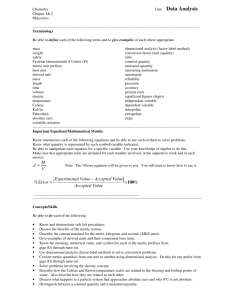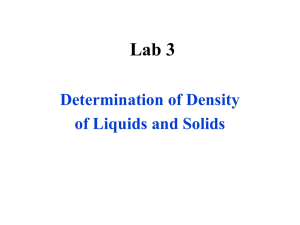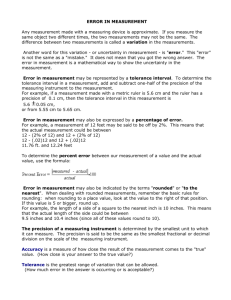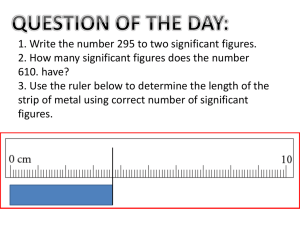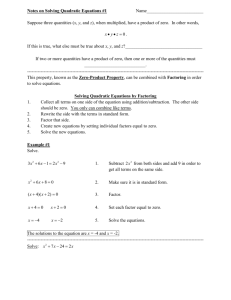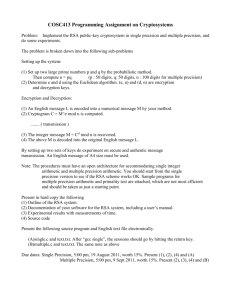LAB L1: PHYSICS LAB METHODS – Measurement of Density
advertisement
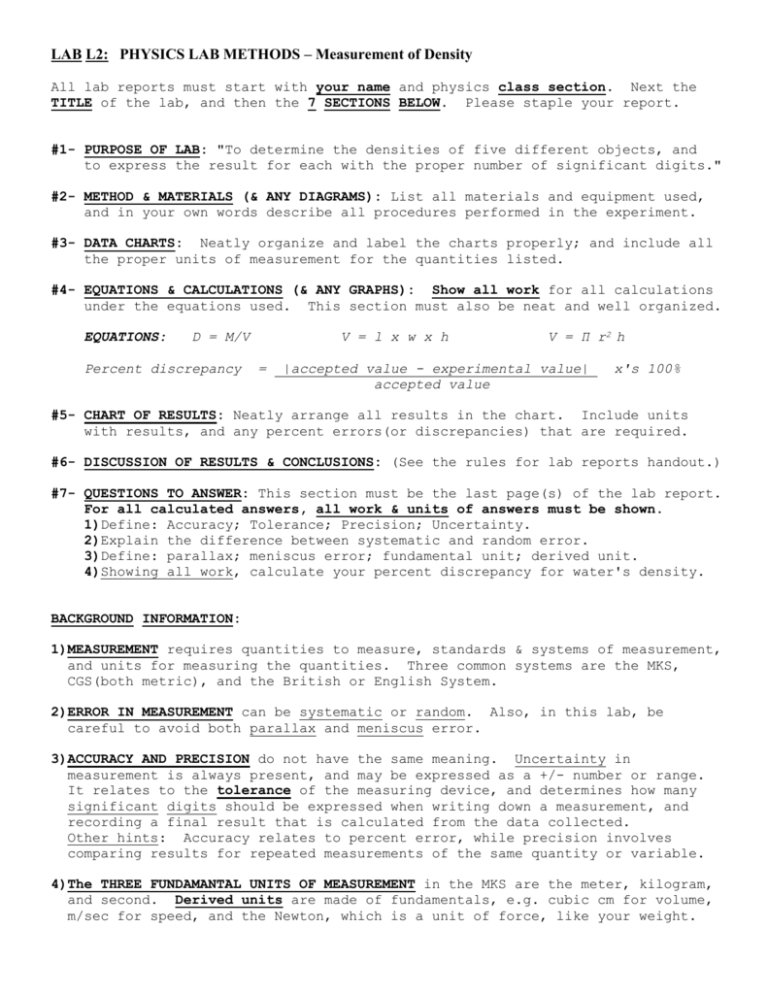
LAB L2: PHYSICS LAB METHODS – Measurement of Density All lab reports must start with your name and physics class section. Next the TITLE of the lab, and then the 7 SECTIONS BELOW. Please staple your report. #1- PURPOSE OF LAB: "To determine the densities of five different objects, and to express the result for each with the proper number of significant digits." #2- METHOD & MATERIALS (& ANY DIAGRAMS): List all materials and equipment used, and in your own words describe all procedures performed in the experiment. #3- DATA CHARTS: Neatly organize and label the charts properly; and include all the proper units of measurement for the quantities listed. #4- EQUATIONS & CALCULATIONS (& ANY GRAPHS): Show all work for all calculations under the equations used. This section must also be neat and well organized. EQUATIONS: D = M/V Percent discrepancy V = l x w x h = V = Π r2 h |accepted value - experimental value| accepted value x's 100% #5- CHART OF RESULTS: Neatly arrange all results in the chart. Include units with results, and any percent errors(or discrepancies) that are required. #6- DISCUSSION OF RESULTS & CONCLUSIONS: (See the rules for lab reports handout.) #7- QUESTIONS TO ANSWER: This section must be the last page(s) of the lab report. For all calculated answers, all work & units of answers must be shown. 1)Define: Accuracy; Tolerance; Precision; Uncertainty. 2)Explain the difference between systematic and random error. 3)Define: parallax; meniscus error; fundamental unit; derived unit. 4)Showing all work, calculate your percent discrepancy for water's density. BACKGROUND INFORMATION: 1)MEASUREMENT requires quantities to measure, standards & systems of measurement, and units for measuring the quantities. Three common systems are the MKS, CGS(both metric), and the British or English System. 2)ERROR IN MEASUREMENT can be systematic or random. Also, in this lab, be careful to avoid both parallax and meniscus error. 3)ACCURACY AND PRECISION do not have the same meaning. Uncertainty in measurement is always present, and may be expressed as a +/- number or range. It relates to the tolerance of the measuring device, and determines how many significant digits should be expressed when writing down a measurement, and recording a final result that is calculated from the data collected. Other hints: Accuracy relates to percent error, while precision involves comparing results for repeated measurements of the same quantity or variable. 4)The THREE FUNDAMANTAL UNITS OF MEASUREMENT in the MKS are the meter, kilogram, and second. Derived units are made of fundamentals, e.g. cubic cm for volume, m/sec for speed, and the Newton, which is a unit of force, like your weight.




